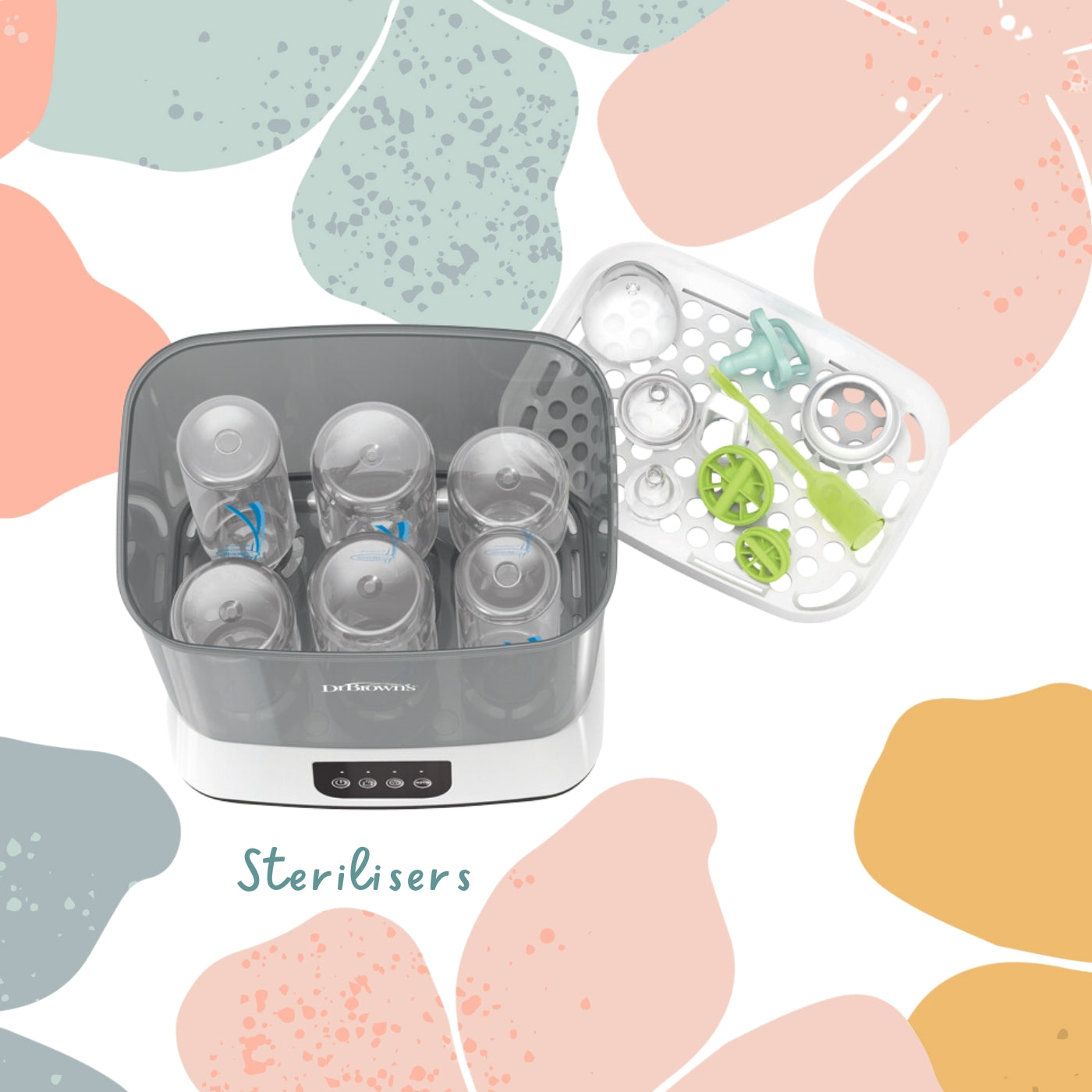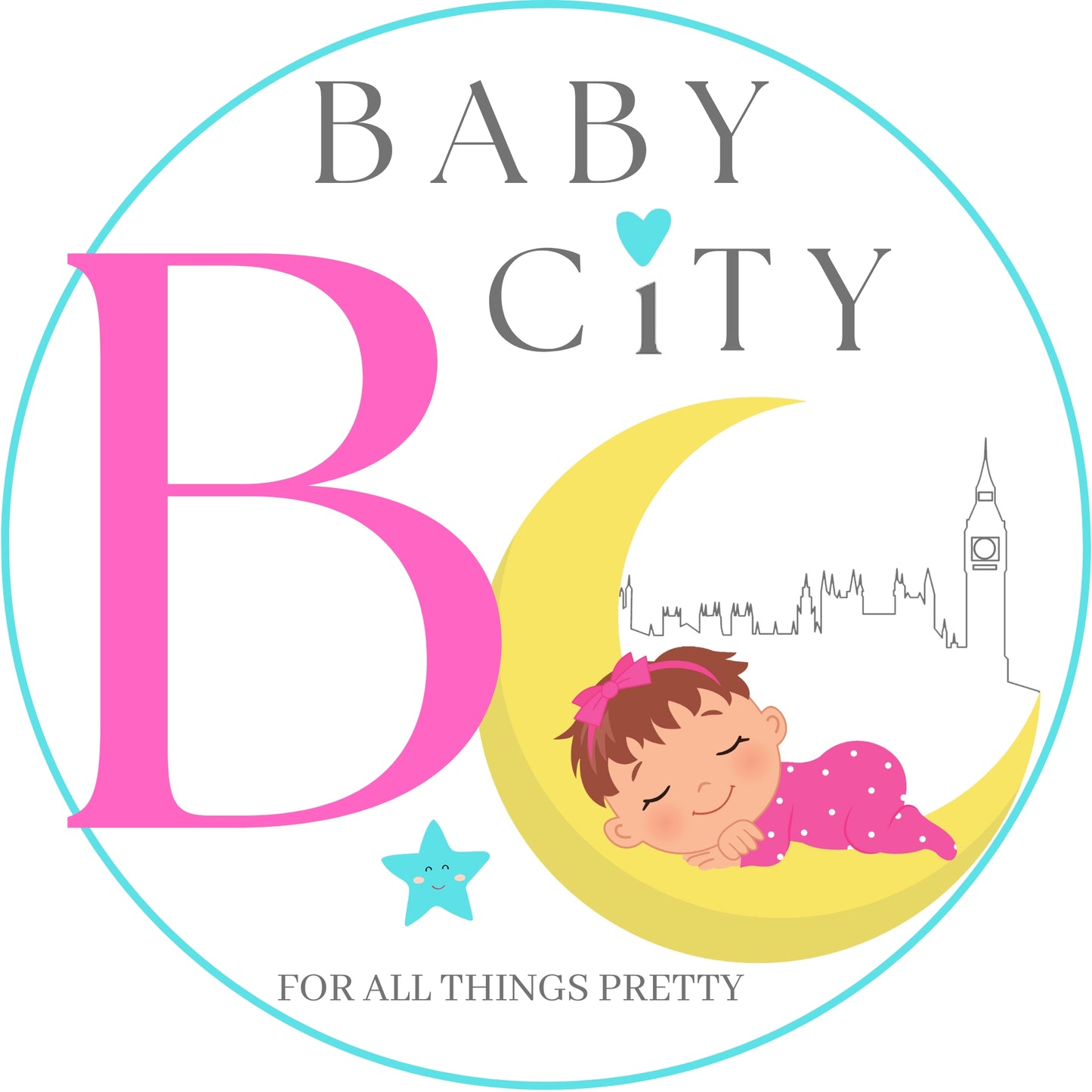
As a parent, nothing is more important than the health and safety of your little one. And when it comes to feeding your baby, sterilization is a crucial step in ensuring they stay healthy. Baby bottles and other feeding accessories can be breeding grounds for bacteria and other harmful germs, which can lead to infections and illnesses in your baby. That%u2019s why it%u2019s important to invest in a good quality sterilizer for your baby's bottles. In this guide, we'll take you through everything you need to know about sterilizers for baby bottles, including why they're important, how to use them, and what to look for when purchasing one. So, let's get started and help you keep your little one safe and healthy!
1. Introduction to the importance of sterilizing baby bottles
As a parent, keeping your baby healthy and safe is of the utmost importance. One area where this is particularly crucial is in the sterilization of baby bottles. Babies have a delicate immune system that is still developing and is therefore more susceptible to harmful bacteria and viruses. Sterilizing baby bottles is one of the best ways to protect your little one from these potential hazards.
Babies put everything in their mouths, including their bottles, which means any bacteria or germs on the bottle's surface can be easily transferred into their mouth and potentially cause an infection. Sterilization helps to kill off any harmful bacteria, viruses, or germs that may be present on the surface of the bottle, ensuring that it is safe for your baby to use.
While washing bottles with soap and warm water is essential, it may not be enough to kill all the bacteria present on the bottle's surface. Sterilization helps to eliminate any remaining bacteria and germs, providing an extra layer of protection for your baby.
There are different methods of sterilization available on the market, each with its own advantages and disadvantages. It's important to choose a sterilization method that works best for you and your lifestyle to ensure that your little one's feeding equipment is always clean and safe to use.
2. Different types of sterilizers for baby bottles
When it comes to sterilizing baby bottles, there are a few different types of sterilizers to choose from. The most common types are electric steam sterilizers, microwave steam sterilizers, and cold-water sterilizers.
Electric steam sterilizers work by using hot steam to kill bacteria and viruses on the baby bottles. These sterilizers are quick and efficient, taking only 6-15 minutes to complete a cycle. They are also easy to use and most models can hold up to 6 bottles at a time.
Microwave steam sterilizers work in a similar way to electric steam sterilizers, but they use your microwave instead of electricity to create steam. These sterilizers are usually more affordable than electric models and take around 2-8 minutes to complete a cycle. However, they can only fit a limited number of bottles at once.
Cold-water sterilizers use a sterilizing solution to eliminate bacteria and viruses on the baby bottles. These sterilizers are especially useful when you are traveling or don't have access to electricity or a microwave. The downside of using a cold-water sterilizer is that the sterilizing process takes longer than steam sterilizers, usually requiring around 30 minutes to an hour to complete a cycle.
It's important to note that whichever type of sterilizer you choose, make sure to follow the manufacturer's instructions and clean the sterilizer regularly. Keeping your baby's bottles clean and sterilized is essential for their health and well-being.
3. Benefits of using a sterilizer for baby bottles
Using a sterilizer for baby bottles is highly recommended by pediatricians and health professionals. Sterilizing baby bottles is critical to keeping your little one safe and healthy. Here are some benefits of using a sterilizer for baby bottles:
1. Kills germs and bacteria: Sterilizing baby bottles will destroy harmful germs and bacteria that may be present in the milk, water, or formula. These germs and bacteria can cause severe illnesses, such as diarrhea, vomiting, or even life-threatening infections.
2. Protects the immune system: Babies have a weak immune system and are highly susceptible to infections. Using a sterilizer for baby bottles will help protect your baby's immune system by preventing the spread of germs and bacteria.
3. Saves time and money: Sterilizing baby bottles using traditional methods such as boiling water or using chemical solutions can be time-consuming and costly. Using a sterilizer for baby bottles is a quick and efficient way to ensure your baby's bottles are always clean and safe to use.
4. Easy to use: Sterilizers for baby bottles are easy to use and come in different sizes and models to fit all of your needs. Some sterilizers use steam to kill germs, while others use UV light. Most sterilizers have an automatic shut-off feature, making them safe to use.
In conclusion, using a sterilizer for baby bottles is an essential practice to keep your little one safe and healthy. It is a small investment that will give you peace of mind knowing that your baby's bottles are always clean and free from harmful germs and bacteria.
4. How often should you sterilize baby bottles?
It's important to keep your little one's bottles clean and sterilized to reduce the risk of infection and illness. But how often should you sterilize them?
In the early months, it's recommended that you sterilize your baby's bottles after each use. This is because their immune system is still developing, and they are more susceptible to infections. As they grow older and their immune system strengthens, you can reduce the frequency of sterilization.
However, it's still important to sterilize the bottles at least once a day until your baby is at least one year old. It's also important to sterilize the bottles after illness or if the bottles have been left out for an extended period of time.
There are different methods for sterilizing baby bottles, including using steam sterilizers, boiling the bottles, or using chemical solutions. Whichever method you choose, make sure to follow the instructions carefully to ensure that the bottles are properly sterilized.
Remember, keeping your baby's bottles clean and sterilized is an important part of keeping them healthy and happy. By following these guidelines, you can ensure that your little one is getting the best possible start in life.
5. Sterilization methods for baby bottles
Sterilizing baby bottles is a crucial step in ensuring that your little one is safe and healthy. There are several methods of sterilization that you can choose from, each with its own pros and cons.
One of the most common methods is boiling. Boiling is easy and inexpensive, all you need to do is submerge the bottles in boiling water for a few minutes. However, this method can be time-consuming and may cause the bottles to deteriorate over time.
Another popular method is using a steam sterilizer. Steam sterilizers are quick and efficient, and they do not require any harsh chemicals. They work by using steam to kill bacteria and other harmful germs. They are also easy to use and can be found in a range of sizes to accommodate different bottle sizes and quantities. However, they can be more expensive than other methods such as boiling and may require electricity or batteries to operate.
There are also microwave sterilizers available on the market. These work by using steam generated from microwave heating to sterilize bottles. They are quick, effective, and easy to use. However, they require a microwave to operate and can be expensive to purchase.
Ultimately, the method you choose will depend on your individual needs and preferences. It is important to remember that whichever method you choose, it is essential to sterilize your baby's bottles regularly to prevent the spread of harmful bacteria and keep your little one safe and healthy.
6. How to choose the best sterilizer for your needs
When it comes to choosing the best sterilizer for your baby bottles, there are a few things to consider. Firstly, consider the size of the sterilizer. If you have a lot of bottles to sterilize, you may want to choose a larger sterilizer that can accommodate more bottles at once. However, if you have limited space in your kitchen, a smaller sterilizer may be a better option for you.
Secondly, consider the type of sterilizer. There are a few different types of sterilizers available, including microwave sterilizers, electric steam sterilizers, and UV sterilizers. Microwave sterilizers are a great option if you're short on time as they can sterilize bottles in just a few minutes. Electric steam sterilizers are another popular option as they are quick, easy to use, and effective at killing germs. UV sterilizers, on the other hand, use ultraviolet light to kill germs and bacteria and are a good option if you're concerned about using chemicals to sterilize your baby's bottles.
Lastly, consider any additional features that the sterilizer may have. Some sterilizers come with features such as drying racks or bottle brushes, which can be a convenient addition to your baby's feeding routine. Others may have adjustable settings for different types of bottles or heating options for warming up milk or food.
Overall, the best sterilizer for your needs will depend on your individual preferences and requirements. Be sure to do your research and choose a sterilizer that is safe, effective, and easy to use.
7. Tips for using a sterilizer for baby bottles
Using a sterilizer for baby bottles is a great way to make sure your little one stays safe and healthy. Here are some tips to help you get the most out of your sterilizer:
1. Read the instructions carefully: Before using your sterilizer, make sure you read the instructions carefully. This will ensure that you use it correctly and get the best results.
2. Clean bottles before sterilizing: It's important to clean your baby bottles before sterilizing them. Use warm soapy water and a bottle brush to clean the bottles thoroughly.
3. Use the right amount of water: Make sure you use the right amount of water in your sterilizer. Too little water can cause the sterilizer to overheat, while too much water can cause the sterilizer to overflow.
4. Don't overfill the sterilizer: Overfilling the sterilizer can cause the bottles to not be sterilized properly. Make sure you only put in the number of bottles that the sterilizer is designed to hold.
5. Sterilize for the right amount of time: Make sure you sterilize your baby bottles for the right amount of time. Follow the instructions that come with your sterilizer to ensure that your bottles are sterilized properly.
By following these tips, you can ensure that your baby's bottles are always properly sterilized and safe for them to use.
8. Cleaning and maintaining your sterilizer
Cleaning and maintaining your sterilizer is crucial to ensure it functions properly and effectively. Sterilizers are designed to kill bacteria and germs that may be present on your baby's bottles, so it's important to keep them clean.
Most sterilizers will come with instructions on how to clean them, but some general tips include cleaning the heating element with a damp cloth, wiping down the inside of the sterilizer with a mild detergent, and regularly descaling the sterilizer to remove any mineral buildup.
It's also important to regularly check the sterilizer for any damage or wear and tear. If you notice any cracks or damage, it's best to replace the sterilizer to ensure it remains safe and effective.
Be sure to also regularly clean your baby's bottles and other feeding equipment before placing them in the sterilizer. This will help ensure that the sterilizer is only killing bacteria and germs, rather than simply removing dirt and debris.
By regularly cleaning and maintaining your sterilizer, you can help ensure that your little one's feeding equipment remains safe, hygienic, and free from harmful bacteria and germs.
9. Frequently asked questions about sterilizing baby bottles
Sterilizing baby bottles is a crucial step in ensuring your little one stays safe and healthy. However, it's common to have questions when it comes to sterilization. Here are some frequently asked questions about sterilizing baby bottles:
Q: How often should I sterilize my baby's bottles?
A: It's recommended to sterilize your baby's bottles at least once a day, especially for newborns. As babies grow, their immune systems also develop, so you can sterilize less frequently.
Q: Is it necessary to sterilize bottles if I'm using a dishwasher?
A: While dishwashers can clean bottles, they don't necessarily sterilize them. To ensure that your baby's bottles are completely free from harmful bacteria, it's best to sterilize them separately.
Q: How long do I need to sterilize baby bottles?
A: The length of time needed to sterilize baby bottles can vary depending on the sterilizer you use. Electric steam sterilizers typically take around 6-8 minutes, while microwave sterilizers can take as little as 2-4 minutes.
Q: Do I need to sterilize bottles every time I use them?
A: If you're using new bottles straight out of the packaging, it's still recommended to sterilize them before first use. After that, you can wash them with hot, soapy water and sterilize once a day.
Q: Can I use regular dish soap to clean baby bottles?
A: Yes, regular dish soap is fine for cleaning baby bottles as long as you wash them thoroughly and rinse well. However, there are also baby bottle-specific soaps available that are formulated to break down milk proteins and other residues.
10. Conclusion and final thoughts
In conclusion, keeping your little one safe and healthy is of utmost importance, and sterilizing their feeding equipment is an essential part of that process. With so many sterilizers for baby bottles on the market, it can be overwhelming to choose the right one for your family.
Consider your needs and lifestyle when selecting a sterilizer. If you're always on the go, a portable sterilizer that can be used in the car or while traveling may be a good option. If you have limited space, a compact sterilizer that can fit on your kitchen counter may be the way to go.
Remember that proper sterilization is key. Always follow the manufacturer's instructions and ensure that all parts of the bottle are thoroughly cleaned and sterilized. Additionally, it's important to replace your sterilizer regularly to ensure its effectiveness.
Investing in a quality sterilizer for your baby's bottles is a small price to pay for the peace of mind that comes with knowing you're doing everything possible to keep your little one safe and healthy.

